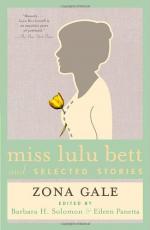|
This section contains 3,547 words (approx. 9 pages at 400 words per page) |

|
While Gale and others were using realism to document how social conventions and economic restrictions often forced women into narrow domestic roles that offered no choice or potential for growth, other playwrights were portraying women who had already moved outside the domestic sphere. This depiction of single women pursuing careers and creating alternatives to patriarchal living arrangements reflects a social trend of the early 1900s. As historian William Chafe has observed, at the end of the nineteenth century, "half the graduates of the best women's colleges remained single, and they constituted the core of female professional workers." These career women—often ridiculed as humorless, sexless "New Women" in the popular press—faced a number of social problems that sound distressingly familiar to 1990s feminists: hostility to women working outside the home (especially from men competing for their jobs), lack of role models in other than...
|
This section contains 3,547 words (approx. 9 pages at 400 words per page) |

|




